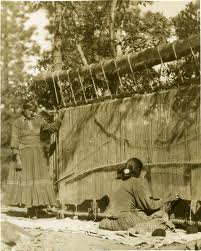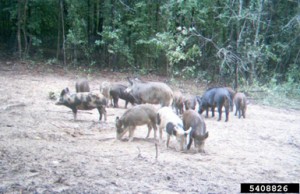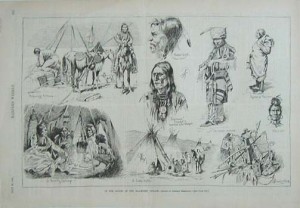White settlers to New England had different ideas about animals than Native Americans, as well as different ideas about land ownership (see last post). Native Americans did not own animals, except for a loose affiliation with dogs and horses, and perhaps tame fowl in some areas. Settlers, on the other hand, brought domesticated livestock with them, which they considered private property. Native Americans were prepared to respect these new animals, but didn’t understand the ownership of another creature.
These differing views led to clashes when Native Americans sometimes hunted livestock or kept a wandering animal for their own use. Tobacco farmers, in particular, let their hogs roam in the forest and eat fallen acorns and nuts. Often, these pigs went wild and tore up Native American corn crops. But, when they killed these feral pigs, Native Americans found themselves somehow in the wrong. Clashes over livestock allowed whites to justify pushing tribes further out from the perimeter of white settled areas. Eventually, this mentality led to a justification for Native American removal from areas of white settlement.
These contrasting world views of property rights (land and animal) could not be reconciled. Whites found Native American ways inexplicable and “uncivilized.” Some humanitarians called the Dawes Act the “Indian Emancipation Act,” because it gave Native Americans their own private property, which they hoped would lead Indians on the road to civilization.
______________________________________________________________________________________


